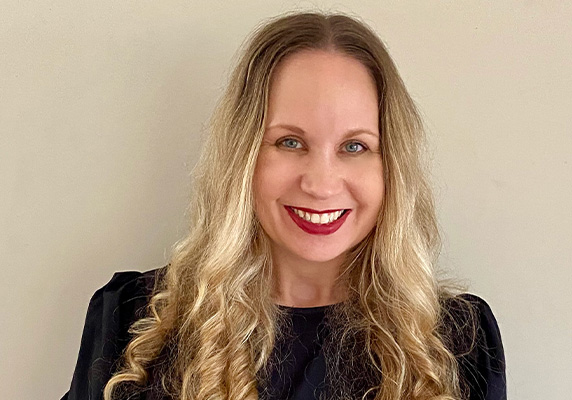World-first research into child abuse and neglect exposes an alarmingly high incidence of harm to children across Australia. Calling for legal and policy reform, it highlights the long-term effects of child maltreatment.
For the first time, Australians have been given a sobering insight into the endemic nature of child abuse and neglect across the country – and the data captured paints a confronting picture for families, the government and legal sector alike.
The Australian Child Maltreatment Study (ACMS), recently published by the Medical Journal of Australia, is the first nationally representative study on the prevalence of all five forms of child maltreatment and a world-first examination of the resulting long-term health and social impacts over the course of an individual’s lifetime.
The five-year ACMS project was led by Dr Ben Mathews, a research professor at QUT School of Law, who has authored 50 legal reform submissions on issues concerning children. Mathews was also a professorial fellow to the Royal Commission into Institutional Responses to Child Sexual Abuse, which helped to identify the need for accessible baseline data to assess whether current interventions adequately address child maltreatment.
More than 8,500 Australians aged 16 years and older were surveyed for the project, which received $2.3 million from the National Health and Medical Research Council. Additional funding was provided by QUT and the Australian government; the latter has announced a further $22.4 million for a subsequent study to capture the experiences of First Nations Australians, people with disability and CALD communities, as well as to track changes in prevalence over time.
Let the ACMS findings sink in:
- 39.6 per cent of Australians have been exposed to domestic violence as children
- 32 per cent have been physically abused,
- 30.9 per cent have been emotionally abused
- 28.5 per cent have been sexually abused
- 8.9 per cent have experienced neglect
- the occurrence of more than one type of child maltreatment is common, affecting 2 in 5 Australians.
The ACMS also assessed the associated impact of maltreatment on Australians and found an increase in reliance on health services and professionals. Australians who were abused or neglected were:
- almost 3 times as likely to develop a mental health disorder such as depression, anxiety or PTSD
- 2 times more likely to smoke
- 6 times more likely to depend on cannabis
- 4 times more likely to have self-harmed in the past year.
“Really shocked” by the prevalence of maltreatment
As a researcher in the field, ACMS project manager Dr Divna Haslam was expecting the findings to indicate a “relatively high prevalence” of child maltreatment, but was “really shocked” when the extent of abuse was revealed.
“It’s not a rare occurrence. These are not things that are happening only in families that have a lot of risk factors, that are living in disadvantaged situations, or in particular geographical areas. This is very widespread. It is an issue of national concern,” Haslam says.

Haslam says, “Australia has historically relied on data about prevalence [of child maltreatment] related to child protection. We have good data on the number of children in child protection systems, but those are underrepresentations of the true scale of the problem. This is because many children who experience maltreatment never actually make it to the notification of those systems.
“When we have good data, we can make good decisions. Our goal in establishing the baseline prevalence of maltreatment is to make a call for action for better systems of support, better reform for support, and better investment from government at all levels to prevent and reduce child maltreatment.”
“Having the data from the ACMS, as confronting as it is, really is a call for change. It’s an impetus for reform from the whole of government and society to do something to better protect our children,” Haslam says.
The legal landscape
Kate Rafton, principal and founder of NSW-based Rafton Family Lawyers, which specialises in family and children’s law, believes it is “very naive” to think that the ACMS findings alone will lead to “sweeping changes” to family law legislation.
Instead, she sees the report having a “direct impact” on the initial proceedings involving the resources and experts used by the family court, which provide evidence to assist the decision-making of the presiding judicial officer.
“In any parenting matter, if there’s a dispute about the best arrangements for children, the court uses resources, including social scientists, psychologists and evidence-based practice. I can certainly see this report and the research undertaken potentially having an impact on some of those resources of the court,” Rafton says.
“It’s confronting to see statistics about the effect of childhood trauma on adults, especially the long-term impact and the cost to the person individually, to family members and to society, through their use of services and resulting mental health issues.
“I think it would be very compelling [for judicial officers] to be looking at this type of study when making recommendations as to the long-term arrangements for children when allegations have been made.”
‘It’s confronting to see statistics about the effect of childhood trauma on adults, especially the long-term impact and the cost to the person individually, to family members and to society.’
While she admits the family law system is “not a perfect system”, Rafton says the family court takes any allegation of abuse and neglect “very seriously”. A NSW Law Society family and children’s law accredited specialist, Rafton has focused on family matters since her admission as a solicitor two decades ago, working for high-profile family law firms across Penrith and Parramatta before establishing her own practice.
Interestingly, Rafton says this approach by the family court has remained the same despite the impact of COVID-19 and sustained lockdowns in NSW, which have significantly increased her firm’s caseload. Part of this, she admits, is a raft of recent structural reforms by the Australian government, which responded to the backlog of matters and lengthy dispute resolution times, creating “very significant change” across the system.
“We’ve seen an increase in the number of judicial officers appointed, especially at the judicial registrar level, and that has really helped ease some of the caseload. We’re definitely seeing a positive outcome of those reforms and we’re seeing matters move through the legal system faster than what was previously the case,” Rafton explains, adding that where matters involving children historically took three years or more to resolve, now take 12 months at most.
“It’s their business” – reluctance to intervene
A clinical psychologist and senior research fellow at QUT School of Law, Haslam applies a prevention lens to her work, aiming to mitigate the risk of early childhood adversity, enhance family wellbeing and support the protection of children. She says a contributing reason to the severity of child abuse and neglect in Australia is a societal mindset to not encroach on the business of other families.
While it is important to recognise that not all abuse occurs in the family domain, when it does, Haslam says “people are reluctant to intervene”. “Even if we see something happening, we decide not to get involved because that’s their family, that’s their private business,” she says.
She also says maltreatment is something all Australians should think about. “It’s a defence mechanism for us to think that this could never happen to my children, that this only happens to others. When we ‘other’, it stops people taking ownership and checking in with their kids. Part of the challenge is making people aware that this is a national issue that impacts many children across the nation, not just small pockets, and it can occur in your family and for your children.”
‘Part of the challenge is making people aware that this is a national issue that impacts many children across the nation, not just small pockets, and it can occur in your family and for your children.’
Haslam argues that a critical part of the solution in addressing systemic child maltreatment is reforming corporal punishment laws in Australia, which was also a focus of the ACMS.
Rethinking corporal punishment
In all states and territories, it is legal for parents or carers to punish their children through reasonable physical force, with the intention of causing pain or discomfort. This can include smacking, pinching and even washing a child’s mouth out with soap. The right for parents to use physical punishment is established in some state and territory legislation, while other jurisdictions, such as in Victoria and the ACT, provide common law defences.
“Corporal punishment is not associated with any positive outcomes for a child, and is in fact associated with harmful impacts. It’s also associated with higher risk of experiencing other types of maltreatment,” Haslam says.
“We’re not allowed to hit anyone else. If we hit an adult or someone else’s child, that’s considered assault, but for some reason, the legal system allows parents to hit their own children. Of course it must be in a ‘reasonable manner’ – but a ‘reasonable manner’ is open to interpretation.
“People don’t want to be told how to raise their children, but we do follow other rules to ensure safety. For example, we’re told to wear a seatbelt in order to drive a car and to follow road rules to stay safe. I think [corporate punishment] is certainly an area where we should be seeing law reform. A number of researchers are also pushing for corporal punishment to be considered as a form of maltreatment, which it currently is not.”
Research shows that corporal punishment is not an effective method of discipline and negatively impacts brain development. Young people who experience corporal punishment are almost twice as likely to develop anxiety and depression in early adulthood, according to ACMS data.
‘Corporal punishment negatively impacts brain development. Young people who experience corporal punishment are almost twice as likely to develop anxiety and depression in early adulthood.’
Australia’s legislation lags behind 65 countries that have made corporal punishment illegal. It is also inconsistent with international human rights guidelines to end all forms of violence against children, including the United Nations Sustainable Development Goals and Committee on the Rights of the Child, to which Australia is a signatory.
Some legal advancements have been made to favour children’s rights. For example, corporal punishment is prohibited in all early child education and childcare settings, as well as in most schools or education environments. Attitudes are also changing, with just under 15 per cent of young people viewing physical discipline as necessary, compared with almost 38 per cent of those aged 65 and older, according to the same ACMS data.
However, Rafton argues that reforming corporal punishment laws is just a small cog in the bigger wheel of action required to protect children from harm. She suggests that efforts be targeted instead on addressing more aggressive behaviour from parents towards their children.
“There are already safeguards in place, such as restrictions on caregivers [exercising] physical discipline in schools … as well as the mandatory reporting obligations that are already legislated,” she says.
“In my experience, especially in the children’s court, the issue of physical abuse of children by parents often goes way beyond a minor physical discipline situation, such as smacking, and is far more aggressive. I don’t think further legislation for corporal punishment will stop physical abuse in these situations.”
A multi-sectoral approach
Haslam agrees that banning corporal punishment is just one area of law among many which can contribute to the reduction, and ultimately elimination, of child maltreatment.
The ACMS provides eight concluding recommendations to leverage change, including:
- greater investment in prevention strategies
- the development of new social norms
- intensified prenatal and postnatal support for parents.
Of particular relevance to the legal field is the recommendation to recalibrate broad policy settings by improving regulatory approaches to housing, taxation, parental leave, childcare and early childhood education, which can help to reduce the risk of some types of maltreatment.
“There are a lot of social determinants that influence whether children are maltreated, and some can be addressed by policy and legal reform,” Haslam concludes.
“We need to reduce stress on parents, which can contribute to the development of abusive patterns. Reducing food insecurity and poverty, increasing taxation breaks for young families, ensuring access to quality childcare, parental leave – all of these things will play a role in reducing the risk of maltreatment and protecting children.
“It really does require a multi-sectoral approach, and law needs to be a part of it.”




